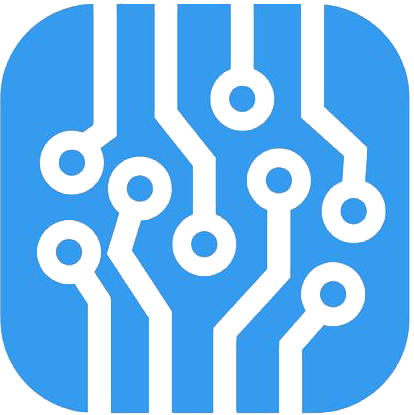Cadence PCB设计高级
-
 课程目标
课程目标
高速PCB设计的潮流已经滚滚而来,如何预防PCB板上出现的信号反射、串扰、电源/地平面干扰、时序匹配以及电磁兼容性等一系列新问题好象突然间挡在了您的面前。如何应对新的设计挑战?Cadence培训高级班将首先让您了解这些问题产生的机理,并掌握其解决方法;然后讲解并上机练习Cadence的高速 PCB设计与仿真工具SPECCTRAQuest的使用。使您在硬件设计过程中,能够达到“设计即正确”的目的。
-
 师资团队
师资团队
-
华清创客企业内训讲师,均是来自各个领域的资深专家,均拥有6年以上大型项目经验。
-
 培养对象
培养对象
①欲从事硬件相关工作的人员
②对电子电路有一定了解;
③热衷于电子线路板设计;
④在PCB设计工作岗位人员为加深了解,寻求问题解决者; -
 培训方式
培训方式
第一种:华清创客讲师面授
课时:共3天,每天6学时,总计18学时
◆费用:3000元
◆培训证书:培训合格学员可获工业和信息化部《国家信息技术应用技能Cadence设计工程师认证证书》(认证费500元)
◆外地学员:代理安排食宿(需提前预定)
第二种:线上直播授课
直播课时:共6天,每天3学时,总计18学时;
辅导:授课期间,辅导老师每天有1小时的辅导直播
◆费用:3000元
◆培训证书:培训合格学员可获工业和信息化部《国家信息技术应用技能Cadence设计工程师认证证书》(认证费500元)
第三种:企业订制培训
课时:根据订制的大纲确定课时
费用:根据课程难度,每课时1500~3000元
◆培训证书:培训合格学员可获工业和信息化部《国家信息技术应用技能Cadence设计工程师认证证书》(认证费500元)
-
-
 质量保证
质量保证
1、培训过程中,如有部分内容理解不透或消化不好,可免费在下期培训班中重听;
2、培训结束后免费提供一个月的技术支持,充分保证培训后出效果;
3、培训合格学员可享受免费推荐就业机会。
-
 课程大纲
课程大纲
第一章
第一节 1 高速PCB设计中的理论基础
传输线理论、信号完整性(反射、串扰、过冲、地弹、振铃等)、电磁兼容性和时序匹配等等。
第二节 2.SPECCTRAQuest设计流程
2.1 Pre-Placement
2.2 Board Setup Requirements for Extracting and Applying Topologies
2.3 Database Setup Advisor
—Cross-Section
—DC Nets
—DC Voltages
—Device Setup
—SI Models
—SI Audit
第三节 3.拓扑结构的抽取与仿真 Extracting and Simulating Topologies
3.1 Pre-Route Extraction Setup—Default Model Selection.
3.2 Pre-Route Extraction Setup—Unrouted Interconnect
3.3 Pre-Route Template Extraction
3.4 SQ Signal Explorer Expert
3.5 Analysis Preferences
3.6 SigWave
3.7 Delay Measurements
第二章
第四节 4.确定和施加约束 Determining and Adding ConstraintsSolution
4.1 Solution SpaceAnalysis: Step 1 to 6
4.2 Parametric Sweeps.
4.3 Constraints:
Topology Template Constraints
Switch/Settle Constraints
Assigning the Prop Delay Constraints
Impedance Constraint
Relative Propagation Delay Constraint
Diff Pair Constraints
Max Parallel Constraint
Wiring Constraint
User-Defined Constraint
Signal Integrity Constraints
4.4 Usage of Constraints Defined in Topology Template
第五节 5.模板应用和基于约束的布局
Template Applications and Constraint-Driven Placement
5.1 Creating a Topology
5.2 Wiring the Topology
5.3 TLines and Trace Models
5.4 Coupled Traces
5.5 RLGC Matrix of Coupled Trace Models
5.6 Crosstalk Simulation in SQ Signal Explorer Expert
5.7 Simulating with Coupled-Trace Models
5.8 Sweep Simulation Results with Coupled-Trace Models
5.9 Extracting a Topology Using the Constraint Manager
5.10 Electrical Constraint Set
5.11 Applying Electrical CSet
5.12 Worksheet Analysis
5.13 Spacing and Physical Rule Sets
5.14 Electrical Rule Set
第三章
第六节 6 基于约束的布线 Constraint-Driven Routing
6.1 Manual Routing
6.2 Routing with the SPECCTRA Smart Route
6.3 Driving Constraints in Routing
第七节 7 布线后的DRC检查和分析 Post-Route DRC and Analysis
7.1 Post-Route Analysis
7.2 SigNoise
7.3 Reflection Simulation
7.4 Reflection Waveform Analysis
7.5 Comprehensive Simulation
7.6 Crosstalk Simulation
7.7 Crosstalk Analysis
7.8 Simultaneous Switching Noise Simulation
7.9 SSN Waveform Analysis
7.10 System-Level Analysis
7.11 A Complete Design Link
7.12 Initialize Design Link
第八节 8 差分信号设计 Differential Pair Design Exploration
8.1 Types of Differential Pairs in SPECCTRAQuest
8.2 Create Differential Pair Using SPECCTRAQuest
8.3 Create Differential Pair Using Constraint Manager
8.4 Assigning Differential Pair Signal Models
8.5 Preference to Extract Unrouted Differential Pair Topology
8.6 Extracting Unrouted Differential Pair Topology
8.7 Custom Stimulus to Analyze Differential Pair Topology
8.8 Differential Pair Topology Analysis
8.9 Coupled Trace Model and Differential Pair Topology
8.10 Layout Cross-section Editor
8.11 Differential Pair Constraints
8.12 Differential Pair Constraints in the Constraint Manager
8.13 Differential Pair Analysis in the Constraint Manager
8.14 Post Route Extraction
- 赞





















